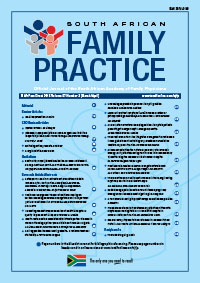Lower urinary tract symptoms (LUTS) in males: a review of pathophysiology
Keywords:
LUTS( lower urinary tract symptoms)
Abstract
Lower urinary tract symptoms (LUTS) refer to the symptom complex that is the common pathway for diseases affecting the lower urinary tract. It manifests as either irritative or obstructive symptoms. LUTS have long been recognised as a significant cause of morbidity in both sexes. The long term sequelae of the underlying cause are also a significant cause of mortality. LUTS have been noted to have a recognisable progression pattern that worsens with age. This is of particular concern in African countries that continue to evolve in terms of the population dynamics. This evolution has resulted in an increase in the geriatric population in both developed and developing countries. There has been a concordant increase in the recognition of the symptom complex with age. This results in a significant percentage of males presenting with LUTS and secondary complications. Several factors interact to produce LUTS. Complex pathophysiological pathways have been investigated to define the roles of individual and cumulative risk factors in an attempt to provide better therapeutic options. It is imperative for scientists to identify reversible factors that influence LUTS. Treatment of the complex of symptoms has the potential to utilise a significant proportion of the healthcare budget. Identification of modifiable risk factors in the pathogenesis of LUTS allows for more cost effective prevention and management of the disease. This article will discuss the definition and pathogenesis of LUTS with particular emphasis on the role of metabolic factors. An algorithm for assessment, initial management and referral criteria is also included. (Full text available online at www.medpharm.tandfonline.com/ojfp) S Afr Fam Pract 2015; DOI: 10.1080/20786190.2014.983307
Published
2015-05-19
Section
Research Articles
By submitting manuscripts to SAFP, authors of original articles are assigning copyright to the South African Academy of Family Physicians. Copyright of review articles are assigned to the Publisher, Medpharm Publications (Pty) Ltd, unless otherwise specified. Authors may use their own work after publication without written permission, provided they acknowledge the original source. Individuals and academic institutions may freely copy and distribute articles published in SAFP for educational and research purposes without obtaining permission.

